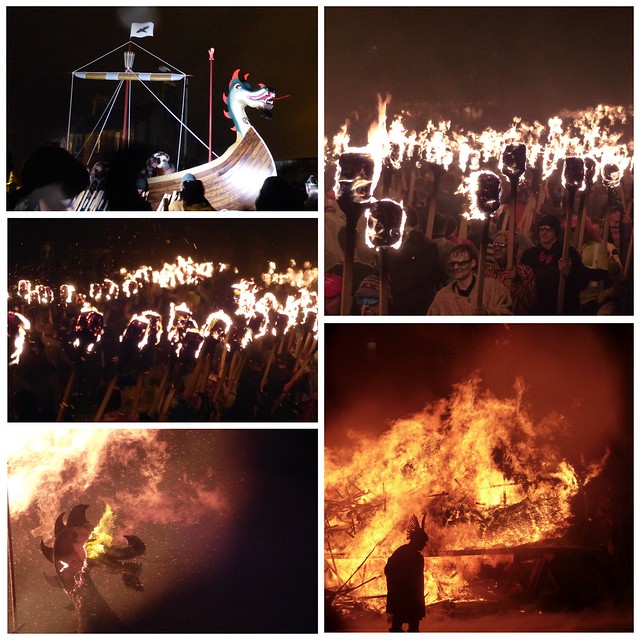UP-HELLY-AA is a relatively modern festival. There is some evidence that people in rural Shetland celebrated the 24th day after Christmas as "Antonsmas" or "Up Helly Night", but there is no evidence that their cousins in Lerwick did the same. The emergence of Yuletide and New Year festivities in the town seems to post-date the Napoleonic Wars, when soldiers and sailors came home with rowdy habits and a taste for firearms.
On old Christmas eve in 1824 a visiting Methodist missionary wrote in his diary that "the whole town was in an uproar: from twelve o clock last night until late this night blowing of horns, beating of drums, tinkling of old tin kettles, firing of guns, shouting, bawling, fiddling, fifeing, drinking, fighting. This was the state of the town all the night – the street was as thronged with people as any fair I ever saw in England."
Album with 8 multiple-photos on Flickr

- Up Helly Aa is a tradition that originated in the 1880s.
- The Guizer Jarl is the Chief Guizer, the leader of the Jarl Squad who are the Vikings for the day.
- The first Up Helly Aa leader was elected by his fellow guizers away back in 1882 and was given the title of Worthy Chief Guizer.
- The Jarl Squad consists of the Guizer Jarls squad who are the same group of men that normally participate in the festival amongst the other 45 squads.
- The contents of the ‘Bill’ Are produced in secret by a committee, the lettering being hand painted on the board the day before and finally the Jarl gives his seal of approval by signing the ‘Bill’ that same evening.
- The Junior Guizer Jarl and his squad march along their procession route to burn the ‘peerie’ galley
- The 900+ senior torches will be lit. The Jarl Squad will lead the procession with the Jarl at the helm of his Galley. The procession will march along the prescribed route before finishing in the burning site at the King George V playing field.
- The first Galley appeared in the Up-Helly-Aa procession in 1889.
Text: uphellyaa.org
Photo and video: Manuel Velasco

